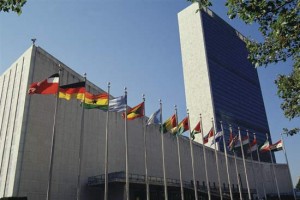UN Tries to Fast-Track LGBT Acceptance and Abortion Access, Again
 The UN bureaucracy is once again trying to fast track the adoption of hundreds of statistical indicators to measure progress on the UN development goals, without giving time for the UN’s political organs to review them.
The UN bureaucracy is once again trying to fast track the adoption of hundreds of statistical indicators to measure progress on the UN development goals, without giving time for the UN’s political organs to review them.
The UN Statistical Commission may adopt a global set of indicators, that among other disputed measurements included social acceptance of homosexuality, access to abortion for adolescent girls without parental consent, and the availability of comprehensive sexuality education, to assess progress on the UN Sustainable Development Goals.
After failing last year, the UN bureaucracy is trying once more to ram the indicators through approval with just two weeks to go before the Commission decides and without as much as a single negotiating session.
The Commission—made up of technical experts who only come to UN headquarters once a year and are unfamiliar with UN negotiations—declined to adopt the indicators last year after UN delegates who spent the last five years painstakingly negotiating the new UN development goals stopped them.
The understanding was that adoption was not possible by the Commission in the first place because the General Assembly agreement establishing the Sustainable Development Goals tasked the Commission to “agree” on the indicators rather than “adopt” them. The goals are supposed to be agreed upon by the highest and most representative political UN organs, the General Assembly and the Economic and Social Council.
The UN bureaucracy, which has been heavily invested in the development of the indicators since 2014, wants the indicators adopted this year in a resolution on global statistics. The resolution would also give sweeping power to UN bureaucrats and statisticians to change the indicators after their adoption and without agreement by governments.
But the Commission was not given the authority to adopt or even recommend the adoption of the indicators by the General Assembly—an inherently political judgement that was never assigned to statisticians unlike the capacity building aspects of the resolution, which have always been dealt with by the statisticians.
The methodology proposed for the most controversial indicators remains unsettled.
The indicators would penalize countries where homosexual acts are proscribed, abortion and contraception are not given to minors without parental consent, and where women chose not to use contraception.
The indicators for targets 10.3 and 16b use “perception of discrimination” as a measurement of social inclusion, and the methodology lists “sexual orientation and gender identity” as a ground of discrimination. This subjective measurement will be assessed through flawed EU survey methodologies that will inflate numbers and be used to target traditional countries.
The indicator for target 5.6 on “access to sexual and reproductive health and reproductive rights” uses laws guaranteeing abortion and comprehensive sexuality education to measure progress. The UN Population Fund (UNFPA) methodology would penalize countries that don’t allow girls access to abortion without parental consent, girls as young as ten.
The indicator for target 3.7 on access to “sexual and reproductive health-care services” purports to measure “need satisfied for family planning.” This would penalize countries where women do not use contraception because they want to have children, object to contraception on religious grounds, or simply do not use contraception because of the negative health consequences and their own ambivalence about conceiving a child.
The methodology proposed for other indicators also controversially uses the output of the UN human rights system and the input of non-governmental organizations to measure progress on the agenda.

